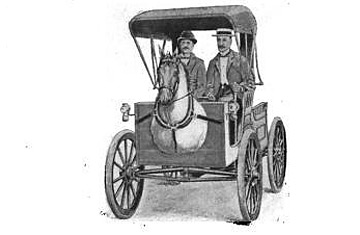Take a close look at the picture to the right. It’s the 1899 Horsey Horseless, considered one of the worst cars of all time (source Time.com). Note the fake horse’s head on the front to give it a “familiar” look to those used to riding in carriages pulled by horses.
Transitional products, like the Horsey Horseless, can be quite problematic and there are a number of such products over the last century that have failed.
Do you have a favorite example of a product that tried to tackle two markets at the same time and failed?
You might have a product problem if the value proposition of your new product sounds something like this:
- Our product bridges the gap between the old and new
- It is the product of today with the all power you need for tomorrow
- It has all the features you could ever want and all the agility you could ever need
Sound familiar? Is so, it is a good sign that you are trying to create a product that is the best of both worlds.
What does this mean?
You are trying to compete in two markets simultaneously by finding benefits that overlap between the groups. Why win in one market when you can have two with a single product?
This is where theory often gets run over by practice. What sounds like a reasonable idea in a PowerPoint pitch deck turns into a complete mess of a product. Instead of a winning combination you are stuck with a product that doesn’t compete in either markets.
You are too expensive, complicated, slow, or all of the above compared to the new entrants. You have too many features, require too much training, and look outdated.
Or on the other side of the coin:
You don’t have enterprise integration, security, and management to compete head-to-head with existing market leaders. You don’t have the extra capacity, the APIs, or the service organization needed to deliver value to an entire organization.
When you are just getting started, finding the right features and benefits (not to mention product messaging) is tough enough for one market. Don’t fall for the trap and try and tackle two at the same time.
Have any other examples that you think failed because they were trying to tackle two markets at once?
One of them may be the recent effort to turn J.C. Penny into, “the Bloomingdale’s for Middle America“?
Josh
Tweet this: Avoiding the “best of both worlds” mindset http://wp.me/pXBON-3Pq #prodmgmt #marketing #innovation
